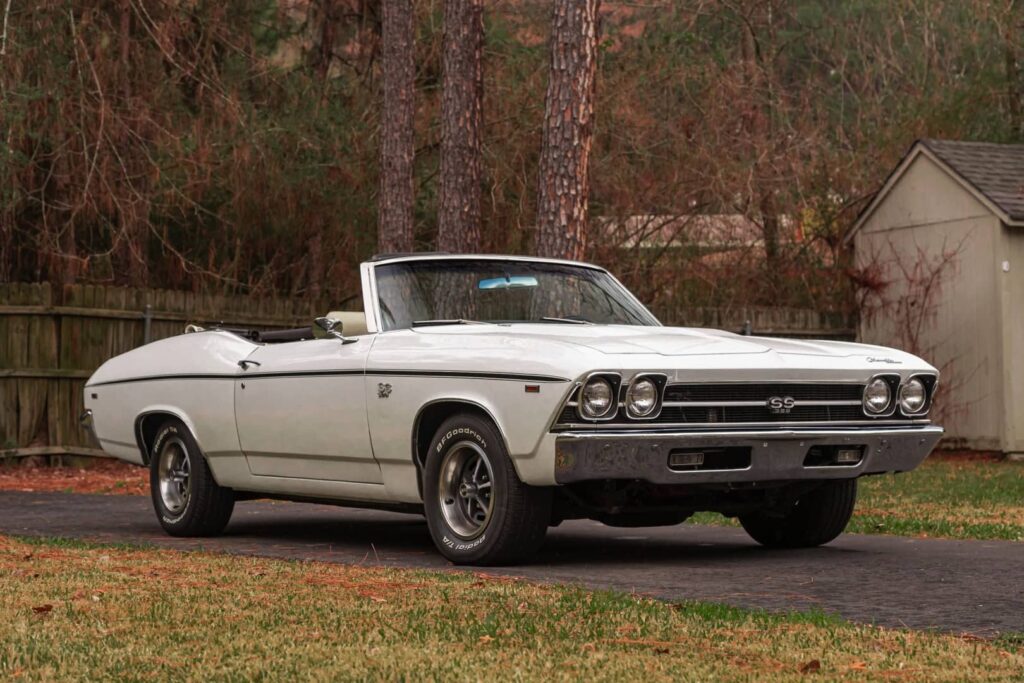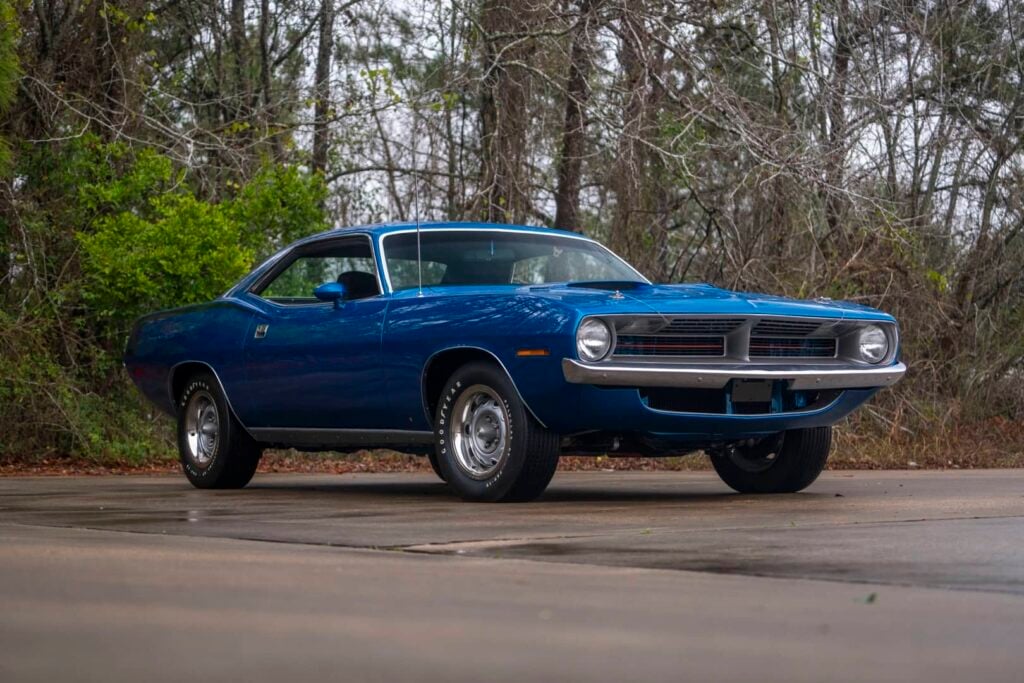Mecum Auction Houston Preview
Mecum Auctions will hold the first of two Texas auctions for 2025 this week from April 3 through April 5 at the NRG Center in Houston. It’s anticipated that 1,000 vehicles will cross the auction block along with an assortment of automobilia. The auction will be viewable on ESPN+ thanks to their recent deal with Mecum.
Several collections will be offered for sale comprising an impressive array of classic and collector cars available to bidders. Let’s take a look at some of the most exciting offers that will cross the auction block on Saturday.

The 1970 Plymouth Superbird was a special model created solely for NASCAR qualification, based on the Plymouth Road Runner. Its design included an elevated rear wing and a streamlined nose cone, both essential for boosting speeds on superspeedway tracks. This vehicle aimed to challenge the Dodge Charger Daytona’s dominance in racing and succeeded effectively on the track, though its bold appearance divided public opinion when driven on regular roads.
Despite its achievements in racing, the Superbird struggled with sales due to its unconventional look and short production span, resulting in many unsold cars sitting in dealerships for long periods. It came equipped with a standard 440 Super Commando engine, along with optional upgrades like the 440 Six Barrel and the famed 426 Hemi. Today, the Superbird is celebrated as a prized collector’s item, embodying a distinctive era of American muscle car history. Its status as a NASCAR icon and emblem of 1970s automotive extravagance has cemented its reputation among the most memorable vehicles from that time.

The 1969 Chevrolet COPO Camaro marks an iconic period in the history of muscle cars, originating from a secretive initiative to bypass GM’s internal limitations on engine size for mid-sized vehicles. The “COPO” designation refers to Central Office Production Order, typically employed for fleet and special-order vehicles. Dealerships such as Yenko Chevrolet and Berger Chevrolet realized they could leverage this system to request Camaros equipped with the powerful 427 cubic-inch L72 big-block engine, usually available only in larger Chevrolets. This led to the creation of a select few exceptionally powerful Camaros that outperformed the regular SS models.
These COPO Camaros were essentially factory-built race cars, devoid of unnecessary comforts and fitted with robust components designed to manage their substantial power output. Notably famous among these were those ordered with the optional ZL1 aluminum 427 engine, a lightweight powerhouse inspired by Chevrolet’s Can-Am racing program. Despite its higher cost, this engine delivered superior performance, making the ZL1 COPO Camaro one of the fastest and most coveted muscle cars ever made. Their limited production runs and legendary reputation have turned them into highly sought-after collectibles, epitomizing the pinnacle of the muscle car era.

The 1969 Chevrolet Chevelle SS Convertible epitomizes the pinnacle of American muscle cars from that era, merging powerful engines with the joy of convertible driving. As part of Chevrolet’s performance package for its mid-sized models, the “SS” or Super Sport designation reached new heights in 1969. The convertible version allowed drivers to experience a potent V8 engine—often the 396 cubic-inch model or the optional 454—while enjoying the freedom of driving without a roof. This combination of power and aesthetic appeal made the 1969 Chevelle SS Convertible a much-coveted vehicle, capturing the essence of its time.
With styling characterized by sleek lines and an assertive look, the ’69 Chevelle garnered admiration. Enhancements like a matte grille, hood pins, and standout SS badges accentuated its muscular design. Inside, it offered both comfort and performance features, including bucket seats and a central console. Although the hardtop coupe was more prevalent, the scarcity of the convertible has elevated its status as a prized collector’s item. It stands as a testament to the perfect fusion of strength, style, and the open-air driving experience emblematic of one of automotive history’s most celebrated periods.

The 1970 Plymouth ‘Cuda emerged during the height of the high-performance vehicle period, marking a significant point in automotive history. It was part of the third generation of the Barracuda line but had evolved into its own model, no longer based on the Valiant platform like earlier versions. Built on Chrysler’s E-body framework, it aimed to rival popular competitors such as the Ford Mustang and Chevrolet Camaro.
Its design was striking with a broad stance, bold grille, and an optional shaker hood that made it stand out immediately. The ‘Cuda offered powerful engines, including the renowned 426 Hemi and the 440 Six Barrel, establishing itself as a formidable performer.
Although it boasted impressive performance and aesthetics, the production span from 1970 to 1974 was relatively short-lived. Several factors led to the decline of the muscle car market, including rising insurance costs, stricter emissions standards, and the fuel crisis of the early 1970s, which all contributed to the discontinuation of the ‘Cuda. Despite this brief existence, its legacy persists, especially the 1970 model year with the Hemi engine, which is now one of the most sought-after and valuable American cars ever made. This enduring appeal highlights the essence of the muscle car era—its raw power and spirited drive.

The 1972 Oldsmobile 442 Convertible marked a significant shift in the muscle car era, showcasing how the automotive industry was evolving. With increasing insurance costs and stricter emissions regulations, the 442 transitioned from being its own model to an option within the Cutlass series. Despite these changes, it maintained its performance-focused nature, offering drivers both power and the pleasure of open-air driving.
The convertible version stood out by merging the excitement of a muscle car with the comfort of cruising, attracting those who preferred a more sophisticated driving experience. Although its performance metrics were somewhat reduced compared to earlier models, the 1972 442 still delivered respectable power through its 455 cubic-inch V8 engine. Its styling featured clean lines and classic Oldsmobile design elements that added to its allure.
As the muscle car period began to fade, the 1972 Oldsmobile 442 Convertible emerged as a remarkable representation of that time, capturing the essence of performance and style prevalent in American cars during the late 1960s and early 1970s making it a significant collector car amongst muscle car enthusiasts.
